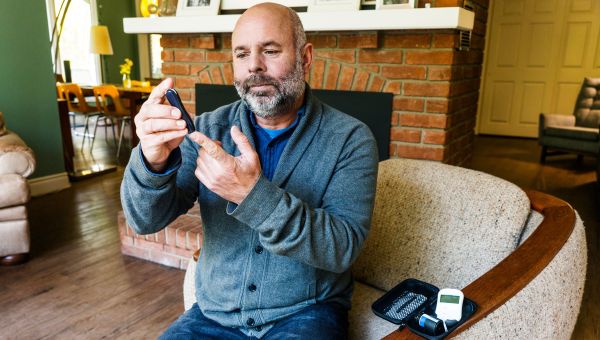How to Monitor Your Blood Sugar for Diabetes

How can you tell if the goals of your diabetes management plan are working to hold your blood sugar in range? The easiest way is to monitor your blood sugar at home.
Daily testing with a computerized glucose meter tells you whether your diet, exercise regimen and medication are working or need adjustment. At-home blood glucose tests can also alert you to dangerous spikes or dips in your blood sugar level.
When to test your blood sugar
Your testing frequency depends on the type of diabetes you have, how long you’ve had it and how well it’s controlled. Your doctor will advise how often you need to test and will help you set up a personalized schedule. That might entail:
- testing before or after meals
- testing before or after exercise
- testing before bedtime or upon waking up
- additional testing on days when you’re ill or highly stressed
There are certain times when testing might need to be more frequent, such as during pregnancy, while quitting smoking and using other nicotine-containing products or when you start taking new medications, such as steroids. You’ll also likely need to test more often when there’s a change in your diabetes treatment program.
How to test your blood sugar
Keep a daily log of your readings, follow the instructions in your user’s manual and use these guidelines to ensure accurate readings:
- Wash your hands with soap and warm water before testing.
- Make sure the glucose meter and test strip are at room temperature.
- Make sure the test strip hasn’t expired.
- If necessary, calibrate your meter for the current box of test strips.
- Insert your test strip into the meter before you obtain your blood sample.
- To obtain your blood sample, hold your hand with fingers pointing down for 30 seconds and use the side of your fingertip.
- Apply light to medium pressure with the lancet pen and then press the button to release the lancet.
- Make sure the drop of blood you draw is large enough (although most modern meters require only a small drop).
- Throw away the lancet in a sharps container.
Types of blood glucose meters
You can choose from a variety of glucose meters. They’re all fairly equal in accuracy, but vary in cost, ease of use and features. You need to maintain a log of your blood glucose measures and some meters have memory to store your results. Others require fewer steps to get a reading.
Some meters provide an automated log for insulin doses and blood sugar level readings, along with software that tracks your progress and transmits your readings to your doctor. These features can save you the trouble of recording your results yourself. Ask your doctor for a recommendation and check with your insurance company to make sure the meter you buy is covered under your plan.
Another alternative is a continuous glucose monitor. These devices provide round-the-clock monitoring through an ultra-thin needle sensor inserted under the skin. If blood sugar falls out of your target range, an alarm goes off.
Although continuous monitoring can offer better diabetes control with reduced risk for low blood sugar, it carries some disadvantages. Depending on the model, the needle sensor may need to be replaced every 6 to 14 days. The devices are also costly. And bear in mind that you still have to perform finger sticks to confirm accuracy.
Sourcing: Harvard Medical School, National Institutes of Health, American Diabetes Association


